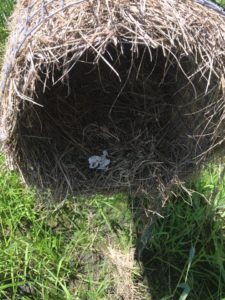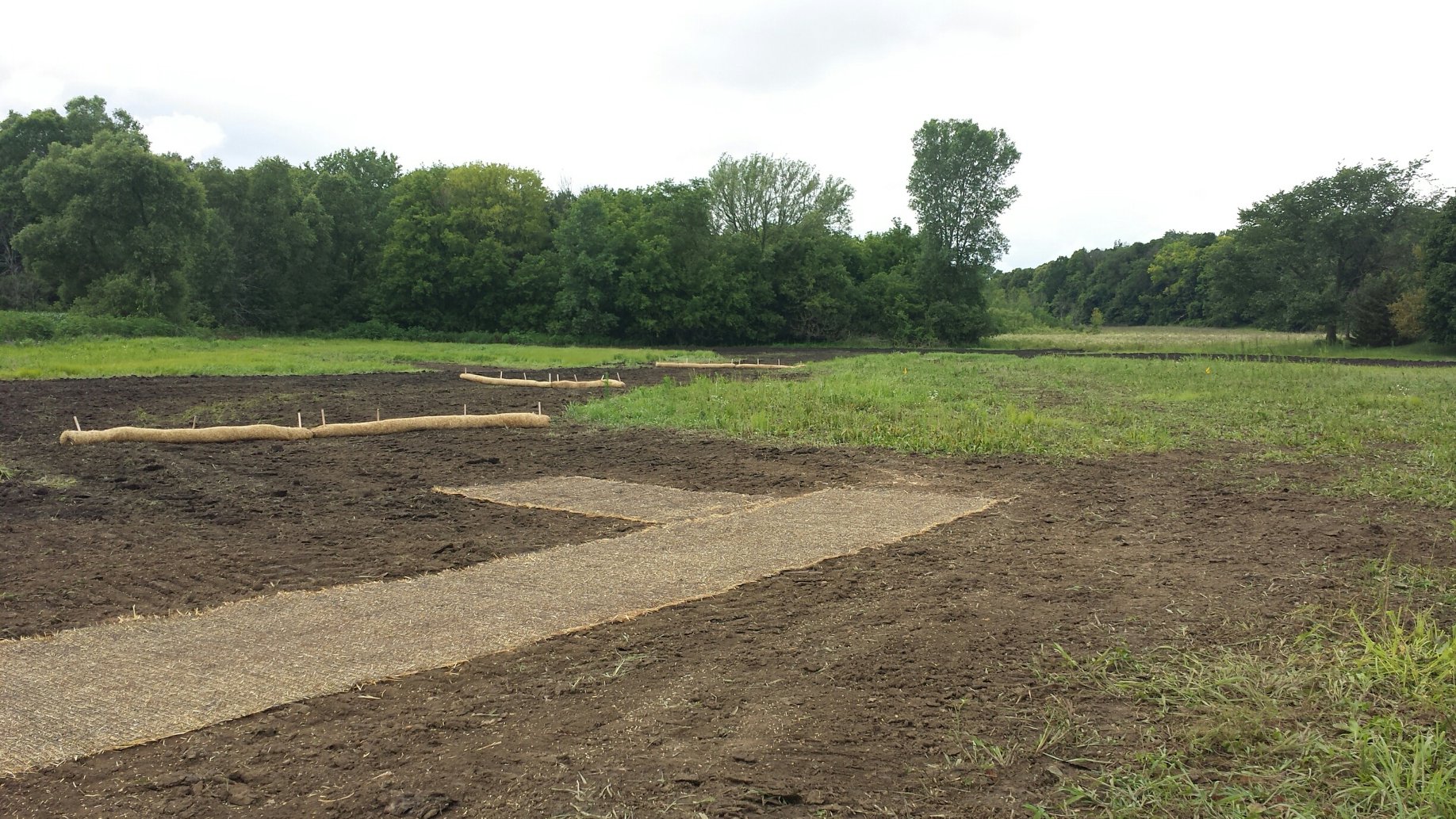Project: Mallard Nesting Tubes, Washington County Project
County: Statewide
By Peter Ziegler, WWA Project Director
So what happened to all the mallard nesting tubes WWA received? We distributed them around the state this past spring to anyone who wanted them at no charge. I have not have time to check the ones I put up; they are out in the middle of a marsh, but I did receive the below picture from a happy landowner. Indications are that his tubes were successful and producing duck broods, not bad since they were installed as egg lying had already begun.
A nesting tube WWA gave to a landowner shows signs of use
Then, last week I was with a contractor, who I have used many times before on WWA project sites, and as we began a restoration project he told me all four of the mallard tubes he installed this spring were utilized. That is pretty good success and I would hope others are seeing this type of success as well; we can only imagine that as these nesting structures remain on the landscape for a longer time frame, the percentage that are used successfully will continue to increase.
How do you know if the eggs hatched successfully or were predated? It is hard to explain, whereas pictures tell a much better story. Successfully hatched eggs will have a leather-like membrane mostly detached from the egg shell itself. The majority of it will be outside the egg, usually in large sections. If you have ever seen turtle eggs which have been dug up and eaten, the white leathery egg, once dried, closely resembles what this membrane looks like post hatching. If predated on, the membrane many times is still attached to the egg shell, or what is separated is in small pieces. Shell-wise, a successful hatch will have a few large sections of egg shell, many times two halves can be identified, while predated ones will be gone or scattered about and are in numerous pieces.
For those of you who are a part of our Facebook group (join in if you’re not, we post some great updates there), you’ve perhaps already seen this, but here’s a great shot I got of a Washington County project WWA completed just before the rain started in today. The waterway mimicking a natural stream channel feeds a small scrape at the headwaters to a larger wooded wetland:


